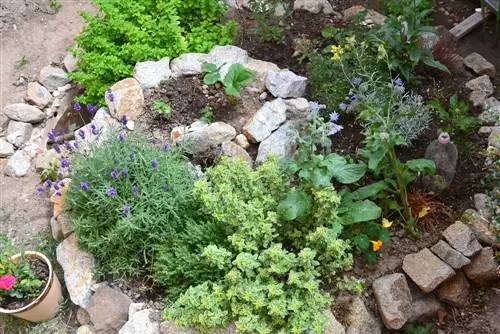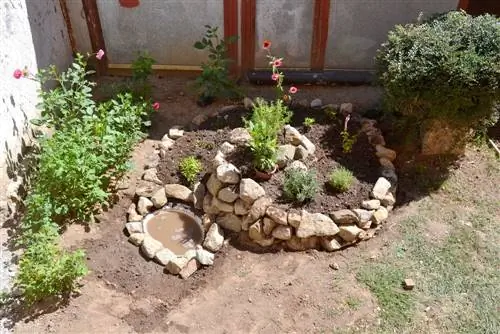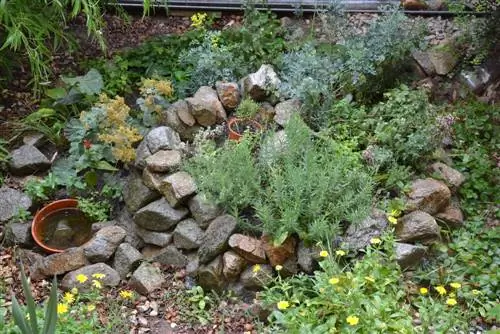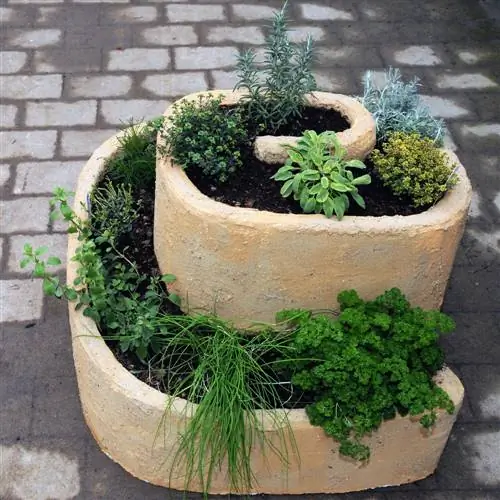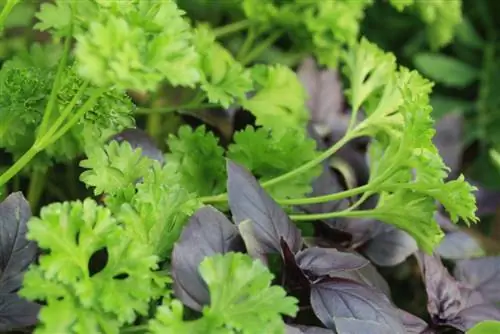- Author admin [email protected].
- Public 2023-12-16 16:46.
- Last modified 2025-06-01 06:02.
The typical construction of a stone or wooden spiral on a hill or a spiral wall creates a bed that rises towards the center. This increases the floor area and makes optimal use of the available space in a sunny location. The bed is divided into several zones with different substrates from lean to dry as well as nutrient-rich and moist.
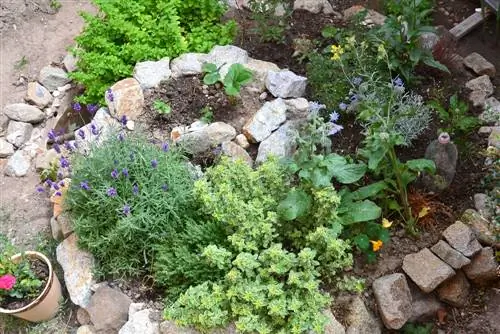
Which herbs fit in which zone of a herb spiral?
Mediterranean herbs such as thyme, marjoram and lavender thrive in the upper zone of a herb spiral. The middle zone is suitable for herbs such as oregano, lemon balm and hyssop. Culinary herbs such as chives, parsley and chervil grow in the lower zone.
Division of the different zones of a herbal spiral
Different moisture and light-shade ratios are created that meet the herbs' climate and soil requirements as best as possible. In addition, the plants benefit from the heat that the stones store from the sun and slowly release again. This heat retention lasts until the night and alleviates any night frosts.
Upper Zone
The top zone of the herb spiral should be in full sun and filled with a permeable, lean and dry substrate. The Mediterranean herbs feel very at home in this location: thyme, marjoram, sage, rosemary, lavender, savory, stevia (sweet herb) and curry herb.
Middle Zone
The middle zone contains moderately nutrient-rich substrate and is also dry. The plants are in a sunny to partially shaded location, depending on the orientation. Many herbs such as oregano, hyssop, lemon balm, pimpinella and purslane thrive here.
Lower Zone
The lowest zone is as nutrient-rich, moist and sunny as possible. It is preferred by typical culinary herbs such as chives, parsley, chervil, Indian nettle, garlic rocket and sorrel.
Other suitable herbs for the lower zone are:
- Dill
- Tarragon
- garlic
- Coriander
- Mints
Small pond at the foot of the herb spiral - perfect for moisture-loving herbs
The end of the spiral is a small area of water, which is located in front of it in the south with an ideal north-south orientation. To do this, dig in a small container or line a small depression with pond liner (€10.00 on Amazon). The water surface ensures evaporation and humidity, and also stores heat during the day, which it slowly releases into the environment at night. It is not only a popular watering place for birds, many small animals and insects also like to drink. Watercress and, if large enough, water mint can be grown in water.
Tip
You can also build your herb spiral next to or behind an existing garden pond, where meadowsweet, valerian and other moisture-loving herbs thrive.

